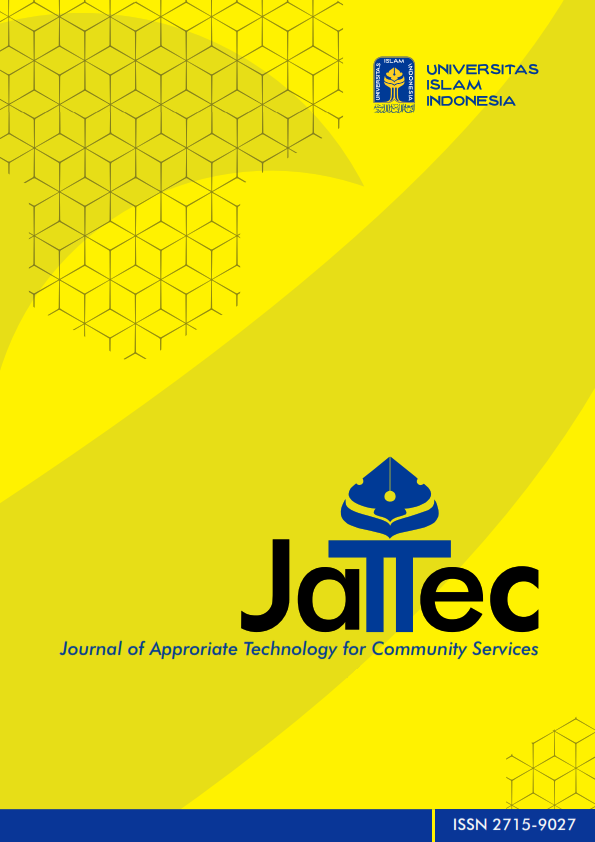Main Article Content
Abstract
Drying of coffee beans in Kemiri village is done in a natural way that dried coffee beans under the sun with a grounded sack, there are no coffee farmers who use the tool to dry the coffee beans. Although, drying the coffee beans using the dryer tool can accelerate the drying process and save the time, without the rainy season constrained and produce better quality. Drying is done with a coffee drying tool can make the coffee beans dry more evenly and perfectly. The coffee drying tool uses principles such as the Nako window, which can rotate 180o-360o. Using a coffee drying tool can adjust the position of the slope of the container in accordance with the direction of the coming sun so that the coffee beans can dry more evenly
Article Details
References
- Aak. (1980). Budidaya Tanaman Kopi. Yogyakarta: Yayasan Kanisius
- Brooker, D. B., F. W. Bakker-arkema and C. W. Hall, (1974). Drying Cereal Grains. Wesport: The AVI publishing Company, Inc.
- Ciptadi dan MZ Nasution. (1985). Pengolahan Kopi. Bogor: Agro Industri Press
- Danarti dan Najayati, S. (2004). Kopi : Budidaya dan Penanganan Pasca Panen. Jakarta: Penebar Swadaya.
- Hendarson, S. M. and R. L. Perry. 1(976). Agricultural Process Engineering. 3 rd ed. The AVI publ. Co., Inc, Wesport, Connecticut, USA
- Rahardjo, Pudji. (2012). Panduan Budidaya dan Pengolahan Kopi Arabika dan Robusta. Jakarta: Penebar Swadaya.
- Santoso, D. Djunaedi, M. dan Mursalim. (2018). Model Matematis Pengeringan Lapisan Tipis Biji Kopi Arabika (Coffeae Arabica) dan Biji Kopi Robusta (Coffeae cannephora). Jurnal Teknologi Pertanian Andalas Vol. 22, No.1
- Tanameracoffee.com/ (2017, 31 Maret). Aneka Ragam Keunikan Kopi. 14 Juni 2020. https://tanameracoffee.com/ID/aneka-ragam-keunikan-kopi/
References
Aak. (1980). Budidaya Tanaman Kopi. Yogyakarta: Yayasan Kanisius
Brooker, D. B., F. W. Bakker-arkema and C. W. Hall, (1974). Drying Cereal Grains. Wesport: The AVI publishing Company, Inc.
Ciptadi dan MZ Nasution. (1985). Pengolahan Kopi. Bogor: Agro Industri Press
Danarti dan Najayati, S. (2004). Kopi : Budidaya dan Penanganan Pasca Panen. Jakarta: Penebar Swadaya.
Hendarson, S. M. and R. L. Perry. 1(976). Agricultural Process Engineering. 3 rd ed. The AVI publ. Co., Inc, Wesport, Connecticut, USA
Rahardjo, Pudji. (2012). Panduan Budidaya dan Pengolahan Kopi Arabika dan Robusta. Jakarta: Penebar Swadaya.
Santoso, D. Djunaedi, M. dan Mursalim. (2018). Model Matematis Pengeringan Lapisan Tipis Biji Kopi Arabika (Coffeae Arabica) dan Biji Kopi Robusta (Coffeae cannephora). Jurnal Teknologi Pertanian Andalas Vol. 22, No.1
Tanameracoffee.com/ (2017, 31 Maret). Aneka Ragam Keunikan Kopi. 14 Juni 2020. https://tanameracoffee.com/ID/aneka-ragam-keunikan-kopi/

